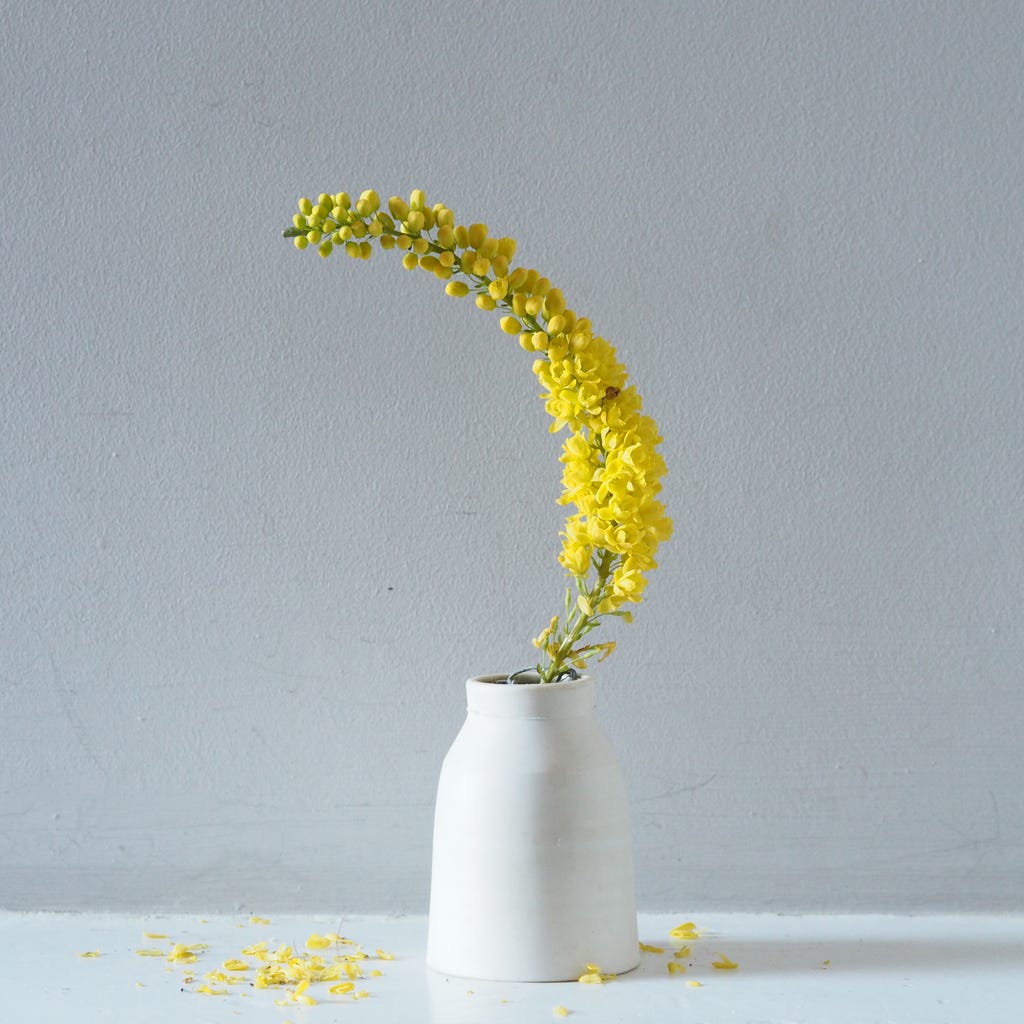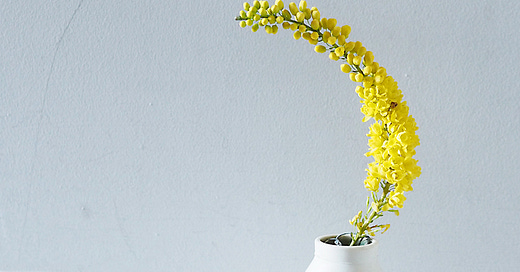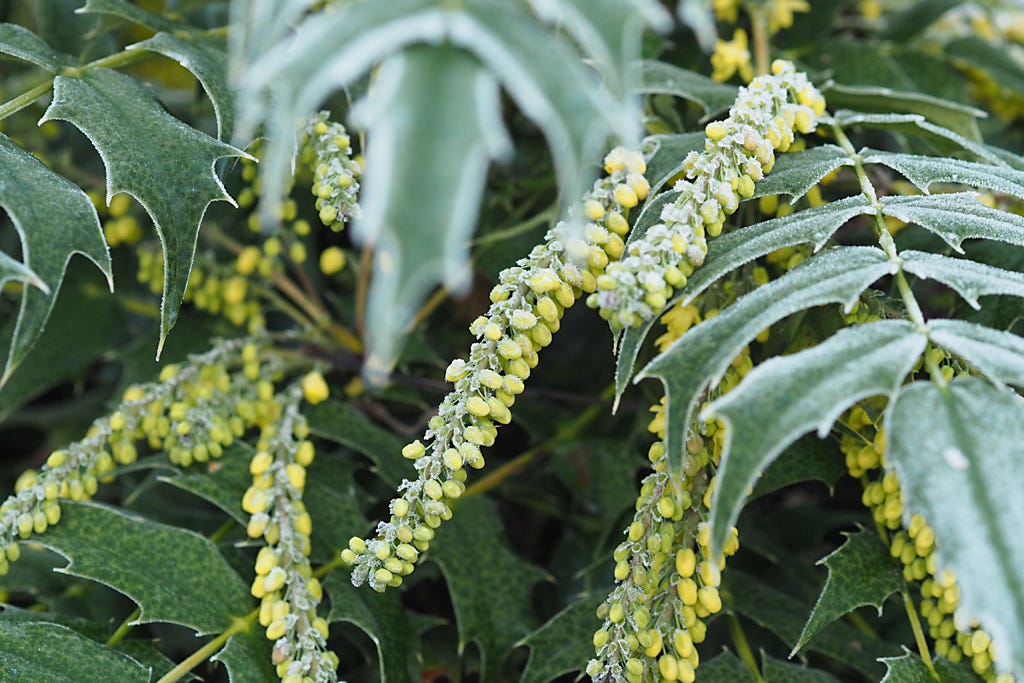The mahonia can’t keep its gold to itself. For three seasons it manages to keep a lid on it though, if you have reason to take a saw to a branch, you’ll see sap wood stained a bright, startling shade of saffron. But as soon as winter rolls around, it bursts into aureate bloom, and the secret’s out. Come to think of it, the number of spooky photos I’ve taken of this particularly garden resident on Hallowe’en – spiky leaves and sinuous flower stems like long, grasping fingers in the twilight – remind me that it likes to be in full flower by the time winter comes around, so the actual bloom bursting happens in autumn. A real stalwart of the darker months, at any rate.
There was barely a thing in the garden when we moved in. I removed great swathes of turf and mapped out large beds for planting, and the mahonia went in with the first wave of shrubs. It was a modest haul that also included the fatsia – its near neighbour in the garden and a similar winter stunner – and the smoke bush. I think the amelanchier, viburnum and oak-leaved hydrangea went in with the next phase, the mock orange, sarcococca and Hydrangea ‘Annabelle’ perhaps a year or two later. The Japanese maple had come with us from our previous garden, a thirtieth birthday present from my parents, and that finished off the shrubby structure for a few years, at least nearest the house.
Each of these has at least one season of interest – a terrible phrase that suggests a plant has little worth if it’s not tickling our fancy, and entirely misleading as it completely overlooks what a plant, and particularly a shrub, can bring to the garden when it’s not doing something of note. Because when the mahonia isn’t being interesting, it’s still being there, and at upwards of 2 metres tall and almost as much wide that’s quite a significant contribution – especially when so often what people want from the planting in their garden is height, and volume and mass and, though they might not necessarily use those words, whatever they can get that will create that feeling of enclosure, of being wrapped around by their living garden, in a world of their own. The mahonia and its friends do this in spades, and though it’s been here for almost twenty years it didn’t take nearly that long to achieve its full height, having been introduced as a small plant in a 2 litre pot. Two years, perhaps? Since when, leaf, and flower, not to mention presence; and absolutely no bother whatsoever.
Now, it’s a prickly customer, there’s no denying. You don’t want to work for too long in close proximity to a mahonia, with its holly-like leaflets and its familial ties to that bane of a working gardener’s existence, the bloody bastard berberis (still a great garden plant, in spite of sporting glove-defying spines). But while it might not be a contender for the cuddliest plant in the garden, I’ve come to look upon it as a dependable old friend, and a reliable source of nectar for the bumblebees when there’s not much else around. As for its insistence on splashing gold about the garden on a dull winter’s day... well. That’s just a bonus.









I’m late to this, sorry. But I have a mahonia and I’d very much like to replace it with something less prickly. It was here when we moved in last summer. Tried to love it unconditionally but nope. I DO love the fruit which attracted a bush full of starlings, although not enough to want to keep it.
I hadn't thought about the whole seasonal interest thing. Granted, if they die off completely and there isn't so much as a nubbin left, they have season(s) of interest, but if they're still there in any shape or form, there's interest. My hackles are now properly raised.